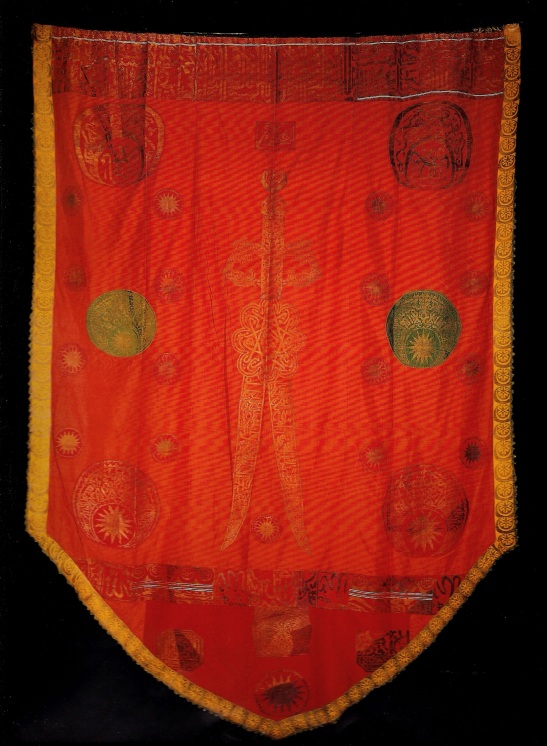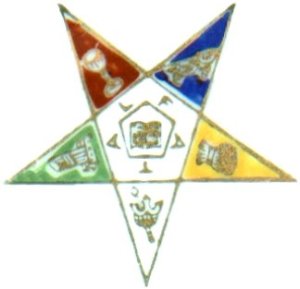
The standard of the first Ottoman Caliph Sultan Selim I represents the Zulfikar sword of ‘Ali ibn Abi Talib. This flag carried to Egypt by Selim I (1466-1520) can be seen in the Topkapi Museum. One can note the “Ya ‘Ali” written above the sword.
The standard of the first Ottoman Caliph Sultan Selim I represents the Zulfikar sword of ‘Ali ibn Abi Talib. This flag carried to Egypt by Selim I (1466-1520) can be seen in the Topkapi Museum. During the 16th-17th centuries the Zulfikar flags were widespread in Ottoman army and numerous red Zulfikar flags left in the battles in Europe are shown in museums and one can even see a red, triangular Zulfikar flag in the Doge Palace in Venice. The Zulfikar sword and triangular banner was confused by 16th century Europeans with scissors & drawn as such. It was later altered and adopted by European Freemasons as the ‘Square & Compass’, the main symbol for Freemasonry. Freemasonry traces its history back to the Knights Templar, who were once banned in Europe for their “fascination with Islam”. This particular flag, venerated by the original Freemasons as the most powerful symbol of Islam, also contains what appears to be a “pentagram” with the words “Ya Muhammad!” in it. Early Freemasons adopted this symbol as well, as the “pentagram of Freemasonry”, its inscription became known as “Baphomet” and the rest is history.

Order of the Eastern Star

Freemasonry’s most sacred or public symbol, the compass and square

